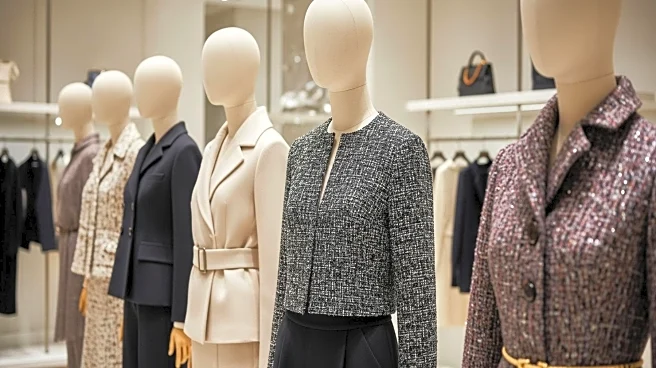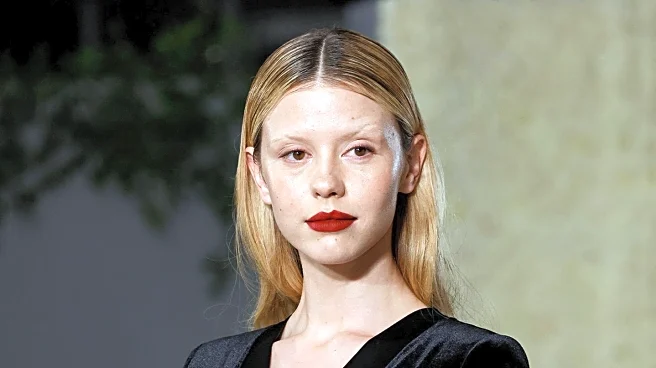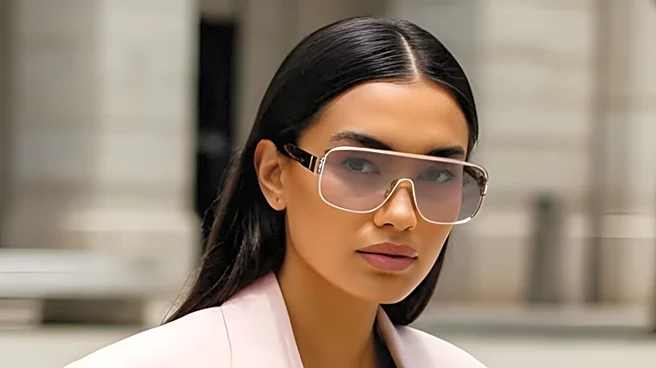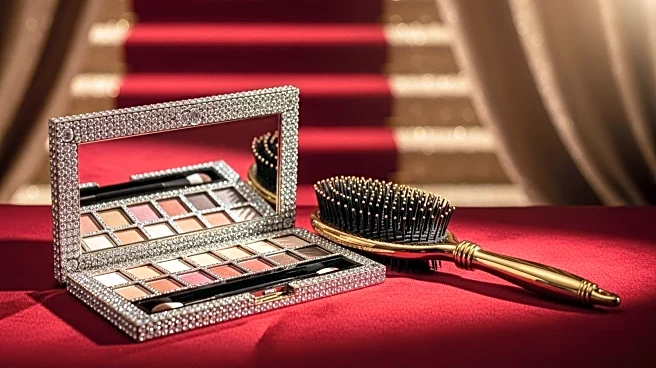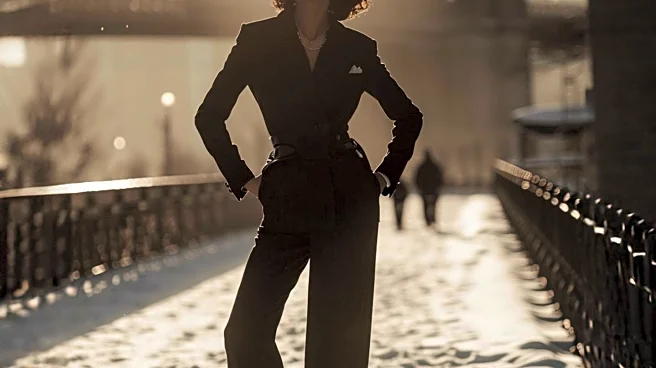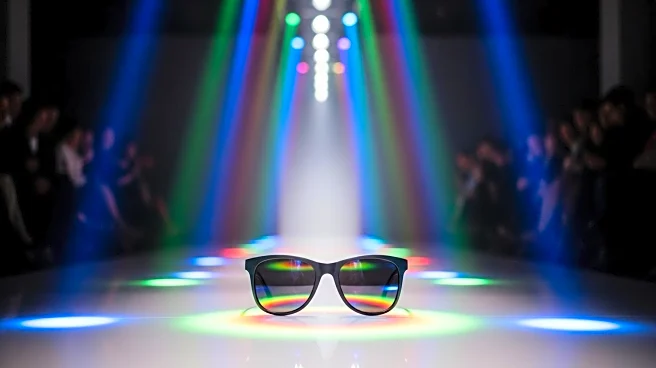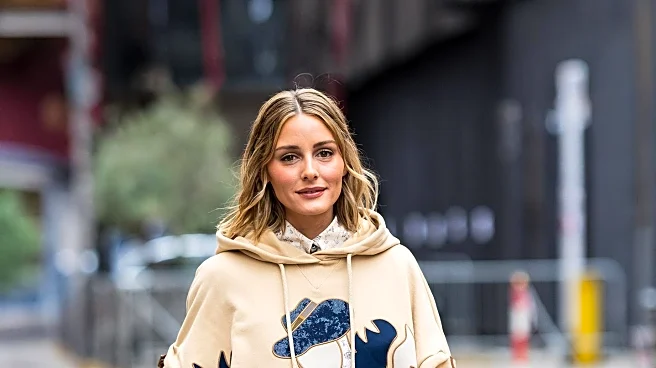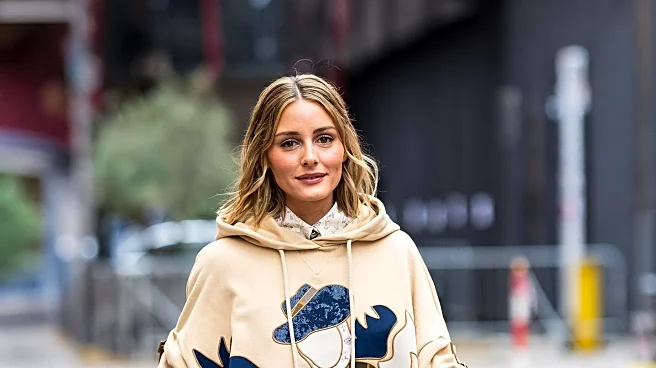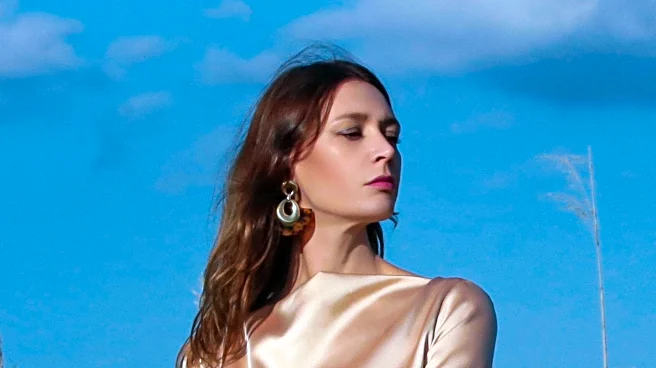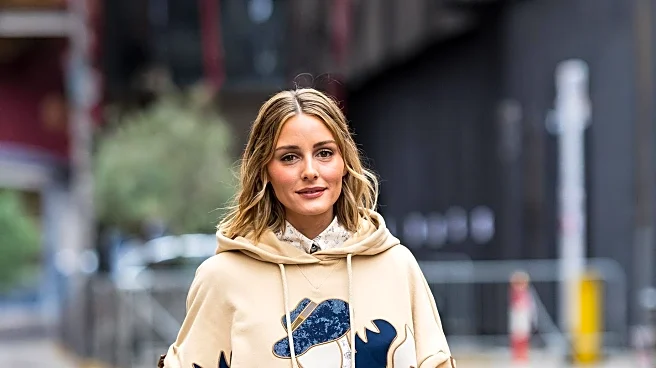What's Happening?
New York Fashion Week has unveiled a series of bold beauty trends, marking a departure from the minimalist makeup styles of previous seasons. Renowned makeup artist Pat McGrath has championed 'unapologetic makeup maximalism,' introducing vibrant pastel lids and matching pale blue lashes at Anna Sui. Other designers, such as Maria McManus and Collina Strada, have embraced colorful eye makeup, including orchid hints and mossy green tones. Hair accessories also took center stage, with models sporting Velcro rollers, hair scarves, and chunky barrettes. The event highlighted a mix of romantic and over-the-top styles, including regal tiaras and hats made of hair.
Why It's Important?
The shift towards bold and maximalist beauty trends at New York Fashion Week signals a broader change in the fashion industry's approach to makeup and styling. This trend could influence consumer preferences, encouraging a move away from understated looks to more expressive and colorful styles. The emphasis on vibrant makeup and elaborate hair accessories may drive demand for new products and inspire creativity among beauty brands and professionals. As fashion weeks often set the tone for upcoming seasons, these trends could shape the beauty industry's direction and impact retail strategies.
What's Next?
As the beauty industry adapts to these new trends, brands may focus on developing products that cater to the demand for vibrant and maximalist styles. Makeup artists and stylists might explore innovative techniques to incorporate these trends into everyday looks. Fashion designers could continue to experiment with bold aesthetics in future collections, potentially influencing other global fashion events. The reception of these trends by consumers and industry professionals will likely determine their longevity and impact on the beauty market.
Beyond the Headlines
The embrace of unapologetic makeup maximalism at New York Fashion Week reflects a cultural shift towards self-expression and individuality. This trend may encourage consumers to experiment with their personal style, challenging traditional beauty norms. The fashion industry's move towards more expressive aesthetics could also influence other creative fields, such as art and design, fostering a broader acceptance of bold and unconventional styles.

